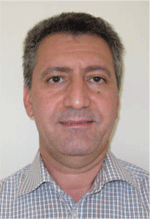Adavale Basin petroleum plays
Alison Troup A B and Behnam Talebi AA Geological Survey of Queensland, Department of Natural Resources, Mines and Energy (Queensland), PO Box 15216, City East, Qld 4002, Australia.
B Corresponding author. Email: alison.troup@dnrme.qld.gov.au
The APPEA Journal 59(2) 958-964 https://doi.org/10.1071/AJ18083
Accepted: 28 March 2019 Published: 17 June 2019
Abstract
The Devonian Adavale Basin system is an under-explored, frontier petroleum basin in south-west Queensland. It has a confirmed petroleum system with production from the Gilmore gas field. The age, marine depositional environments and high carbonate content suggest the basin may have unconventional petroleum potential, and there has been renewed interest from industry in evaluating the basin. In support of this, the Queensland Department of Natural Resources, Mines and Energy has examined the source rock properties of the Bury Limestone and Log Creek Formation and has commissioned an update to the SEEBASE® interpretation of the region. Gas- to oil-mature source rocks are found in deep marine shales of the Log Creek Formation, with secondary potential in the shelfal Bury Limestone. The main known reservoir within the Adavale Basin is the Lissoy Sandstone, though sandstones found in other units may also have tight reservoir potential. These petroleum systems elements form several plays, including conventional clastic structural targets, carbonate plays, including possible reef targets, and salt plays associated with doming from the Boree Salt. Potential unconventional targets include tight sandstone, shale and limestone, with recent analysis of an organic-rich marl from the Bury Limestone indicating good retention properties. The overlying Cooper, Galilee and Eromanga basins also contain potential reservoirs for hydrocarbons generated in the Adavale Basin and Warrabin Trough.
Keywords: Bury Limestone, conventional, Cooladdi Dolomite, Gilmore gas field, Log Creek Formation, petroleum system, shale gas, tight gas, unconventional, Warrabin Trough.

Alison Troup has worked in the Geological Survey of Queensland (GSQ) since 2010, after graduating from the University of Queensland with a BSc (Hons) in Geology, where she examined coal seam and interburden architecture in the Walloon Coal Measures. She has worked as part of the Energy and Petroleum and Gas groups within the GSQ, participating in several regional prospectivity projects. She is currently part of the Basin Studies group in GSQ. She has an interest in understanding and assessing the petroleum potential and source rock characteristics of sedimentary basins in Queensland. She is a member of the Formation Evaluation Society of Queensland and the Petroleum Exploration Society of Australia. |

Behnam Talebi is a geologist and completed his post-graduate studies in Geothermal Energy Technology at the University of Auckland in 1996. Between 1997 and 2013, he ran several geothermal energy projects in Australia and Iran, from reconnaissance studies through to field exploration and development programs. Behnam has recently managed completion of SEEBASE studies in North West and Central Queensland. He is currently assisting a regional deep seismic program within the Geological Survey of Queensland to generate new pre-competitive geoscience information for explorers to help identify new hydrocarbon generation potential in North West and Central Queensland. |
References
Asmussen, P., Bryan, S. E., Allen, C. M., and Purdy, D. J. (2018). Geochronology and geochemistry of the Devonian Gumbardo Formation (Adavale Basin): evidence for cratonisation of the Central Thomson Orogen by the Early Devonian. Australian Journal of Earth Sciences 65, 1133–1159.| Geochronology and geochemistry of the Devonian Gumbardo Formation (Adavale Basin): evidence for cratonisation of the Central Thomson Orogen by the Early Devonian.Crossref | GoogleScholarGoogle Scholar |
Bell, R. (1984). A-P 305P, AAR Rosebank 1, Well Completion Report. Unpublished exploration report CR 13870. Queensland Department of Natural Resources, Mines and Energy, Brisbane.
Bell, R. (1985). A-P 304P, AAR Gifford 1, Well Completion Report (Q-11A–991). Unpublished exploration report CR 13920. Queensland Department of Natural Resources, Mines and Energy, Brisbane.
Boreham, C. J., and de Boer, R. A. (1998). Origin of Gilmore gas and oil, Adavale basin, Central Queensland. The APPEA Journal 38, 399–420.
| Origin of Gilmore gas and oil, Adavale basin, Central Queensland.Crossref | GoogleScholarGoogle Scholar |
de Boer, R. A. (1996). The integrated development of Gilmore field and an independent power plant. The APPEA Journal 36, 117–129.
| The integrated development of Gilmore field and an independent power plant.Crossref | GoogleScholarGoogle Scholar |
Department of Natural Resources, Mines and Energy (2019). Petroleum gas production and reserves statistics to 30 June 2018. Available at https://data.qld.gov.au/dataset/petroleum-gas-production-and-reserve-statistics [verified 15 May 2019]
Draper, J. J., Boreham, C. J., Hoffman, K. L., and McKellar, J. L. 2004, Devonian Petroleum Systems in Queensland. In ‘PESA’s Eastern Australasian Basins Symposium II, Adelaide, September 19–22 2004’ conference proceedings’ (Eds. P.J. Boult, D.R. Johns and S.C. Lang) pp. 297–318. (PESA: Perth, WA).
Elloy, R., Peniguel, G., and Cassou, A.-M. (1977). Carbonate study, Adavale Basin, Queensland, Australia (A sedimentological approach). Unpublished exploration report CR 5916. Queensland Department of Natural Resources, Mines and Energy, Brisbane.
Finlayson, D. M., Leven, J. H., and Etheridge, M. A. (1988). Structural styles and basin evolution in Eromanga region, eastern Australia. The American Association of Petroleum Geologists Bulletin 72, 33–48.
Frogtech Geoscience (2018). Adavale Basin SEEBASE® Study and GIS. Queensland Geological Record 2018/04.
Goldman, M., and Johnson, R. L. (2017). Methodology for assessing original gas in place and estimated ultimate recovery from a tight marine formation using hydraulic fracture stimulation modelling. The APPEA Journal 57, 136–149.
| Methodology for assessing original gas in place and estimated ultimate recovery from a tight marine formation using hydraulic fracture stimulation modelling.Crossref | GoogleScholarGoogle Scholar |
Kamon, R. (1972). Geological Report South Dartmouth Salt Dome, QLD, Aust. A-P 202P. Unpublished exploration report CR 4306. Queensland Department of Natural Resources, Mines and Energy, Brisbane.
Knuth, B. W. (1967). A-P 109P, PPC Dartmouth 1, Well Completion Report. Unpublished exploration report held by the Queensland Department of Natural Resources, Mines and Energy as CR 2045.
Kyranis, N., and McDonagh, G. P. (1966). A-P 109P, PPC Log Creek 1, Well Completion Report. Unpublished exploration CR 1799. Queensland Department of Natural Resources, Mines and Energy, Brisbane.
Mahlstedt, N., and Horsfield, B. (2016). Queensland - Geos4 Repot 2016216 (Round 2), Source rock evaluation and predicted petroleum compositions relating to samples from the Adavale, Bowen, Cooper and Eromanga basins. Michendorf.
McKillop, M. D., McKellar, J. L., Draper, J. J., and Hoffmann, K. L. (2005). The Adavale Basin: Stratigraphy and depositional environments. In ‘Proceedings of the Central Australian Basins Symposium, Alice Springs, 16–18 August 2005’. (Eds. T. J. Munson and G. J. Ambrose). pp. 82–107. (Northern Territory Geological Survey: Darwin, NT).
Miyazaki, S., and Ozimic, S. (1987). Australian Petroleum Accumulations Report 4: Adavale Basin, Queensland. Bureau of Mineral Resources, Geology and Geophysics, Canberra.
Paten, R. J. (1977). The Adavale Basin, Queensland. In ‘Petroleum in Queensland - a Stocktake for the Future’. (Eds. B. P. McCaul). pp. 57–86 (PESA, Queensland Branch: Brisbane, QLD).
Phillips Petroleum Co. (1965). A-P 109P, PPC Gilmore 2, Summary Report. Phillips Petroleum Co., Brisbane.
Remus, D., and Tindale, K. (1988). The Pleasant Creek Arch, Adavale Basin, a Mid Devonian to Mid Carboniferous thrust system. The APPEA Journal 28, 208–216.
| The Pleasant Creek Arch, Adavale Basin, a Mid Devonian to Mid Carboniferous thrust system.Crossref | GoogleScholarGoogle Scholar |
Short, D. A., and Herriot, J. H. (1987). A-P 301P, HEP Barwinock 1, Well Completion Report. Unpublished exploration report CR 20134. Queensland Department of Natural Resources, Mines and Energy, Brisbane.
Slanis, A. A., and Netzel, R. K. (1967). Geological review of A’s-P 109P and 125P, QLD, Aust. Unpublished exploration report CR 2201. Queensland Department of Natural Resources, Mines and Energy, Brisbane.
Troup, A., and Gorton, J. (2017). Analysis and characterisation of petroleum source rocks in Queensland. The APPEA Journal 57, 806–809.
| Analysis and characterisation of petroleum source rocks in Queensland.Crossref | GoogleScholarGoogle Scholar |
White, A. H. (1985). A-P 3481M (Boree), A-P 3761M (Boree East) Joint six monthly report for six months ending 9/11/84. Unpublished exploration report CR 13713. Queensland Department of Natural Resources, Mines and Energy, Brisbane.


